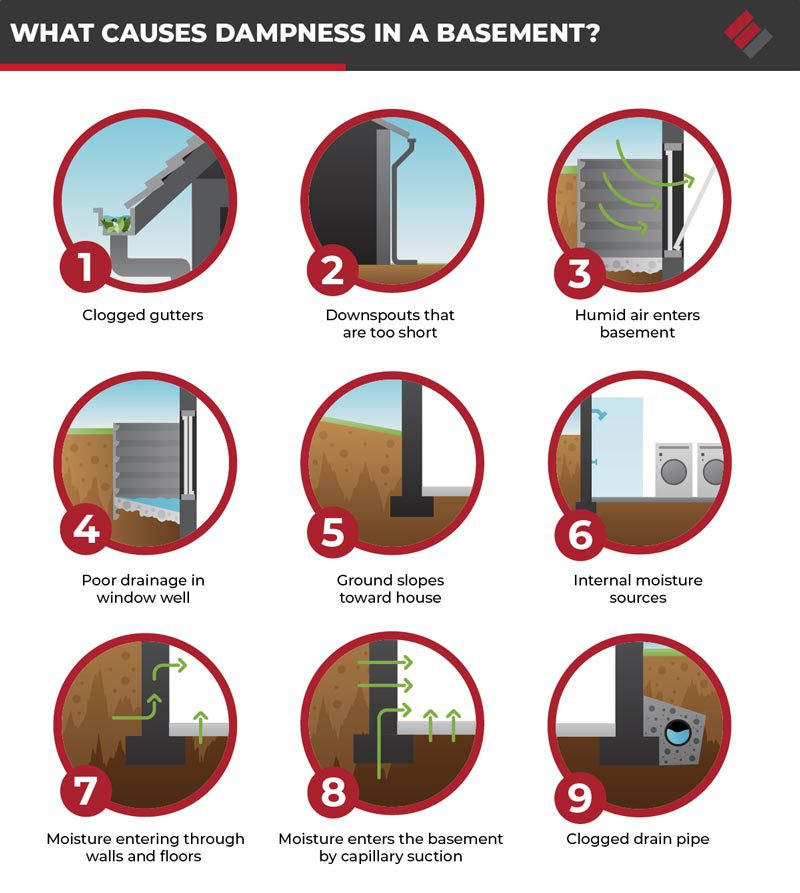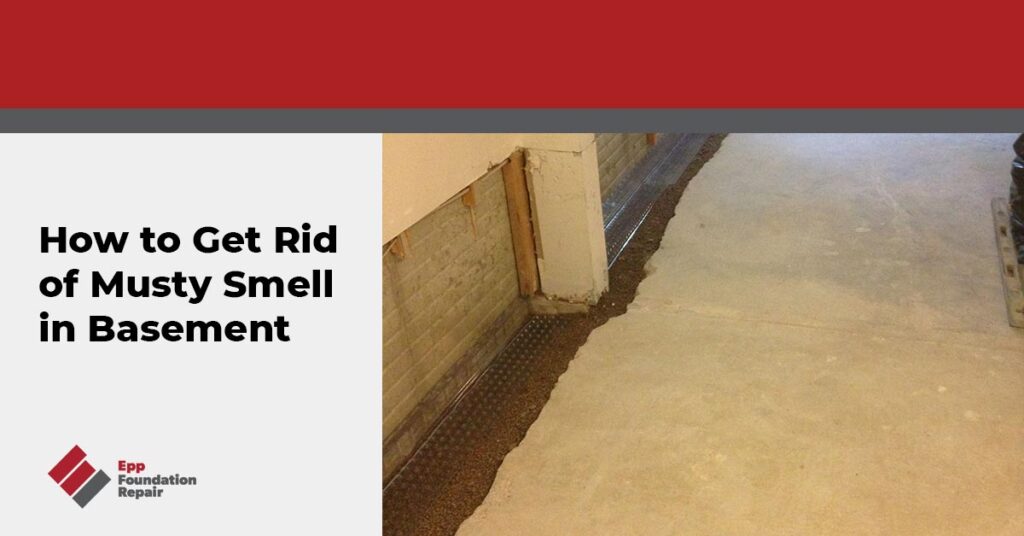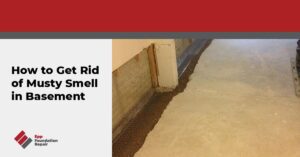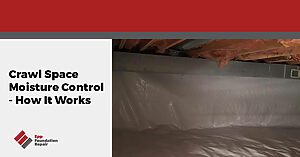Looking for information on how to get rid of the musty smell in your basement? If so, you’ve landed on the right page because that’s what this article is about. By the time you’re done reading it, you’ll know why basements smell musty, how to get rid of the musty smell, and the best way to ensure it never returns.
Why Do Basements Smell Musty?
It’s really pretty simple. Basements smell musty because they’re full of mold, and they’re full of mold because they’re damp.
So, why are basements often damp? Basements get damp – and sometimes even wet – because there’s excess moisture in soil around the foundation. Concrete is porous and if there’s moisture outside those walls, it will find a way to get inside your basement and cause trouble.

How To Get Rid Of A Musty Smell In The Basement
You can get rid of a musty smell in a basement by getting rid of moisture. In other words, by effective waterproofing. This is really the only way you’re ever going to permanently get rid of that musty basement smell.
Sure, you can spray some air freshener or use a dehumidifier 24/7, but these aren’t permanent solutions. The only way to get rid of that musty basement smell is to get rid of the excess moisture in the soil around the foundation.
The good news is, it’s possible to control groundwater around a foundation and get a basement that’s dry enough to live in. But, before we do that, let’s talk about why basements get wet.
Why Do Basements Get Wet?
The main reason basements get wet is because they’re underground. That means if there’s excess moisture in the soil around the foundation, you’ve got a problem because water always finds a way in. So, you can solve the problem by getting rid of excess moisture in the soil, and the best way to do that is by installing a drain tile system.
Waterproofing A Basement Using a Drain Tile System
Unlike other waterproofing systems that simply put up a barrier to keep water out of the basement, a drain tile system solves the root problem of excess moisture in the soil around the foundation.
There are two types of drain tile systems, exterior and interior. Here’s how they work:
Exterior drain tile system
An exterior drain tile system is installed around the outside perimeter of the foundation at the footing level:
- The first step involves excavation down to the footing.
- A shallow trench is dug and then lined with gravel.
- A perforated, plastic drainage pipe is placed on top of the gravel and then covered with more gravel.
- Finally, the excavated soil is replaced.
Now, any excess moisture in the soil will make its way into the perforated pipe and get channeled toward the sump pit. When the sump pit fills with water, the sump pit will kick in and eject the water away from the foundation.
Exterior drain tile systems are easy to install during a home’s construction. However, they can also be installed in existing homes.
Interior drain tile system
An interior drain tile system is installed around the inside perimeter of a basement or crawl space. The installation process is as follows:
- A shallow trench is dug around the inside perimeter of the basement or crawl space. In the case of a basement installation, this means the floor will need to be broken up around the perimeter to dig the trench.
- After the trench is lined with gravel, a perforated drainage pipe is placed into the trench and then covered with more gravel.
- If it’s a basement the homeowners are planning on finishing, the slab will be replaced. Sometimes, if the basement is going to be used for storage only, the drainage pipe is simply covered with gravel.
Excess moisture in the soil now flows into the pipe and toward the sump pit. When the pit is full of water, the sump pump turns on and expels the water away from the foundation.
For more information see, The Most Effective Basement Waterproofing Method.
Other Ways To Prevent a Musty Smell In A Basement
Although a drain tile system is the best way to prevent your basement from smelling musty, there are some other things you can do that are less expensive. They all involve controlling groundwater around the foundation. These include:
- If necessary, regrade your yard so that it slopes away from the foundation – You don’t want water draining toward and soaking into the soil around the foundation.
- Clean your gutters regularly – If your gutters are chock full of dead leaves and other debris, water is likely to spill over the side of the house and soak the ground around the foundation.
- Install downspout extensions – Downspouts are inexpensive and easy to install. They will carry water away from your foundation at least four feet before releasing it.
- Install an underground downspout and pop-up emitter – Runoff flows into the underground downspout and toward the pop-up emitter situated somewhere in your yard, around 10 feet from the foundation. When the pop-up emitter is full of water, it pops up and releases the water away from the foundation. (When the pop-up emitter is empty, it sits flush with the ground and is barely visible.)
- Don’t plant shrubs, flowers, etc., next to your foundation – They need water and you’re trying to avoid adding water to the soil around the foundation.
If you’re trying to get rid of a musty smell in your basement and you’re in our service area in Lincoln, Omaha, Grand Island, Kearney, Nebraska, Missouri, Iowa and parts of Northeastern Kansas, contact us today for a basement evaluation and waterproofing estimate.







